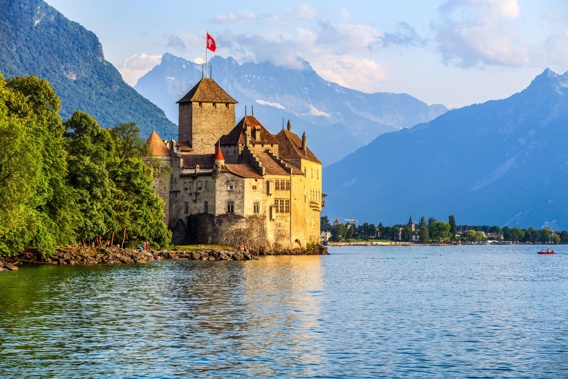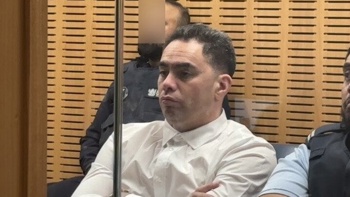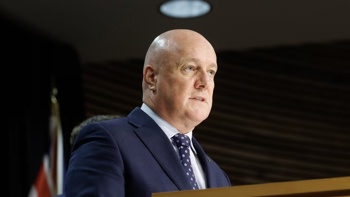
The land of cheese, chocolate and clocks commands a magnetic pull with travellers and the Swiss Riviera adds a topping of glittery escapism to the equation. Situated on the eastern shores of sprawling Lake Geneva, the millpond body of water is encircled by towering alpine peaks; including the Jura mountains to the west, and the sky-scraping Alps striding southeast towards Italy. Even at the height of summer, some of the tallest peaks are slathered in snow. The Swiss Riviera’s glitzy lakeside towns were first thrust onto the Grand Tour route two hundred years ago, feted in prose and poetry by the likes of Lord Byron, Mary Shelley, Leo Tolstoy and Hans Christian Andersen. From rock stars to writers, they have lured the creatives, the rich and the famous ever since.
I had made my way to this oasis of lake and alpine beauty on a Globus escorted tour, along with twenty other eager travellers from the US, Canada and Singapore. They were an effervescent bunch of seasoned travellers, spanning a wide age range, from the forty-somethings to those well in their seventies. We were all savouring the new-found sense of liberation to roam the world again. Our foray with the Swiss Riviera began on the shores of the lake at Chateau de Chillon. This enchanting castle looks like it’s been lifted from the pages of a fairy-tale. Chillon Castle is a romantic medieval broach that combines your best expectations with the era's gritty reality.
It's a beautiful place with a brooding heart and lively tales to tell. Most of the castle dates from the 13th century, but its oldest section is thought to be 1,000 years old. Built by Peter II of Savoy, Chillon is considered one of the best preserved medieval castles of Europe. The dukes of Savoy charged taxes on the passing transalpine trade. Over time, Chillon transformed from grim military fortress to elegant residence. Luxuries included latrines plunging into Lake Geneva, magnificent tapestries and ornate four-poster beds. Mantled chimneys were a double-edged innovation, allowing the castle residents to enjoy fire-warmed rooms.
Chillon proudly displays its military arsenal from the Middle Ages, including the crossbow famously synonymous with Swiss freedom fighter William Tell. So-called sorcerers were tried and tortured here. The most famous prisoner, François Bonivard, was famously immortalised in Lord Byron’s poem, The Prisoner of Chillon. After holidaying on Lake Geneva in 1816 and visiting the castle, he penned the poem, which became a rallying cry for freedom across Europe.
Bonivard was the prior of St. Victori in Geneva, and when he supported Geneva's independence in 1532, the vengeful Catholic duke of Savoy chained him in the prison until 1536, when he was released by the Bernese. The underground prison is the biggest highlight. Our absorbing guide remarked that when wealthy Victorians were doing their Grand Tour, inspired by Lord Byon and other romantic writers, they would tour the prison at Chillon, which was still full of inmates.
The pillars in the prison are scrawled with graffiti and the autographs of delinquent residents over the centuries. Mark Twain noted in A Tramp Abroad, “Bonivard's dungeon was a nice, cool, roomy place, and I cannot see why he should have been so dissatisfied with it.” Somerset Maugham suggested it should be turned into a gymnasium. The prison has pretty Romanesque arches and openings onto glittering lake water. Wordsworth, Dickens and Goethe have all traipsed through here.
When I had some downtime, I walked from Chillon Castle to downtown Montreux, via the spectacular lakeside promenade, ablaze with flower beds. Try and snap the chateau as the sun sets on the surrounding peaks, for a truly magical shot. Montreux has long been a playground for poets, playwrights and pop-stars. Often described as the Pearl of the Swiss Riviera, this gilded lakeside resort town oozes X-factor. In the 1980s, the front-man for celebrated rock band Queen, Freddie
Mercury, relocated from London to Montreux to escape the jaws of starry-eyed fans. The locals loved having the superstar as an honorary resident, and he remained living here to the day he died in 1991.
Shortly after he lost his battle with AIDS, town officials funded a magnificent bronze statue of Freddie Mercury striking a trademark performance pose, which takes pride of place in Place du Marche, by the covered market, overlooking the lake. It was heavily cloaked with tributes, candles and love notes on my recent visit – like an enduring shrine. I spoke to numerous locals who are deeply disappointed that the recent movie release on Freddie Mercury, Bohemian Rhapsody, failed to recognise the role Montreux played in his latter years. Every year on September 5, the town honours his birthday with a Freddie Celebration, thronging with concerts and visiting celebrities. Enjoy a drink at the Belle Epoque hotel blockbuster, Fairmont Le Montreux Palace, which was a favourite haunt of Freddie’s.
A headline Montreux attraction with music fans is Queen: The Studio Experience. This can be found at the former Mountain Studios, where Queen recorded at various times between the late 1970s and 1990s. Brian May opened the museum in 2013, and it’s packed with memorabilia related to the British rock band. Another sightseeing essential is the Montreux casino. In 1971, during a concert by Frank Zappa, a rocket-flare was fired into the ceiling of the casino, and the entire building was soon engulfed by flames. (Hence why the casino today looks so modern!) As clouds of smoke towered above the waters of the lake, Ian Gillan of Deep Purple, who was watching the spectacle from his hotel room, was inspired by the dramatic sight, and Smoke on the Water was the result.
Just north of Montreux, our Globus group stayed in the neighbouring town of Vevey, which is the home of Nestlé chocolate. With an evocative old town, Vevey is a charmer to explore on foot, following in the footsteps of Charlie Chaplin, Graham Greene, Victor Hugo and Ernest Hemingway, who were enchanted by Vevey. For a slice of local life, head to Café de La Clef, the landmark cafe of Vevey. Enjoy some libations as you drink in the views of the pillared marketplace out front. and over the years it's seen a parade of who's who from Oona Chaplin to Le Corbusier. As you drink your libation, you can enjoy views of the pillared marketplace out front. Enjoy local Swiss specialties, like fresh perch from the lake or a hearty fondue.
Gracing the lakeside promenade, a statue by John Doubleday on the new square Chaplin, commemorates Charlie’s second home. Chaplin moved here from the United States in 1952 with his young wife, Oona O'Neill, in part to escape accusations of Communist sympathies. Except for brief interludes, he remained in Vevey until his death in 1977. The life-size statue erected in his honour represents the little tramp in baggy pants -- the character Chaplin made famous -- gazing out at his favourite view of Lake Geneva and the snow-clad Alps.
Chaplin actually lived in the little village of Corsier, just above Vevey. The comedian is buried in the cemetery, a 3-minute walk downhill from the village. You should definitely include a visit to Chaplin’s World, the only museum dedicated to the revered comic actor and film-maker, housed in his former estate. Peppered with letters, photos and original furnishings, the home is also filled with lifelike wax figures of Chaplin and his famous friends (such as Albert Einstein). Recorded television performances and home movies of Chaplin and his family are particularly enthralling. Our Globus tour was based at Modern Times Hotel, a magnificent property that has been artfully themed in honour of Charlie Chaplin.
Another huge highlight in the Swiss Riviera which I eagerly joined was the YourChoice Excursion to the Lavaux Vineyards. Boarding a local Riviera train with a local guide, we were vino-bound. At 800
hectares, the terraced vineyards of this UNESCO-protected landscape forms Switzerland's second largest wine region (Valais is the largest), with terrace after terrace offering celestial views. The vines were first planted in Lavaux in the 11th century when Benedictine and Cistercian monasteries controlled the area.
Clinging to the steep slopes, rising up from the lake as high as 500 metres, the exquisitely scenic terraced vineyards, benefit from the sun and its warming rays three times over: from the rays coming straight from the sun, the ones bouncing off Lake Geneva, and those from the radiated heat of the network of ancient stone walls. We gave ourselves a solid work-out climbing up through these vine-wreathed terraces from St Saphorin, where the views kept us chorusing a collective round of oooh and aaah. These lush green vineyards plunging all the way into Lake Geneva create a mesmerising amalgamation of green and blue hues.
Lavaux’s winemakers, who are largely family-owned businesses, produce supremely delicate whites ranging from sweet and honeyed to mineral-bitter, depending where on the warm slopes of Lake Geneva you’ve drifted. Synonymous with the Chasselas varietal, this very old native Swiss grape variety originated on the shores of Lake Geneva. The personality of Lavaux’s dominant grape was carved by glacial activity during the last ice age, when the Rhone Glacier retreated and the steep slopes of the vineyards were formed. Lavaux consists of fossil-rich sandstone.
Chasselas is most often served as an aperitif or paired with the excellent local artisan cheeses or lake fish, like perch. This white wine variety goes well with cheese fondue. The best examples can be complex and rich, showing a range of fruity, floral and mineral flavours, with good acidity. Older wines show more honeyed and nutty flavours, taking on a deep golden colour.
Be sure to enjoy a generous sample of the local wines, as Switzerland exports less than 5% of its production - if you don’t taste it here, you may not get another chance. Our group headed to the fabulous Lavaux Vinorama, for a great tasting from the more than 300 local wines on offer. A short film in 8 languages offers the opportunity to discover a winegrower’s work throughout the year. Fun fact: Swiss believe that you have to look the person in the eye when you clink glasses! Otherwise, you will have bad sex for seven long years.
Choice Touring by Globus is a recent innovation to their impressive repertoire, acknowledging that one size doesn’t fit all. YourChoice Excursions are a selection of curated experiences, so you can tailor your tour to accentuate what chimes with your interests and passions. In addition to the Lavaux offering which I plumped for, other excursion options included visiting Maison Cailler chocolaterie (Switzerland’s oldest chocolate brand, founded in Vevey in 1819) or feasting on Swiss delicacies in the picturesque town of Gruyeres. Our perky group of Globus travellers totalled 30, but with a choice of excursions, many of them transformed into small-group encounters with just ten fellow travellers, heightening the intimacy of the experiences.
Experience Choice Touring by Globus for yourself. 2023 departures on the 8 day The Alps Out Loud: Switzerland & Lake Como by Design tour, are priced at $3,899 per person. That includes touring by private, air-conditioned motorcoach, outstanding excursions, some meals, 7 nights first-class hotel accommodation, hotel taxes, porterage, tips and service charges. Plus you’ll earn 3,899 Qantas Points. www.globustours.co.nz
Mike Yardley is our resident traveller on Jack Tame Saturday Mornings.
Take your Radio, Podcasts and Music with you









